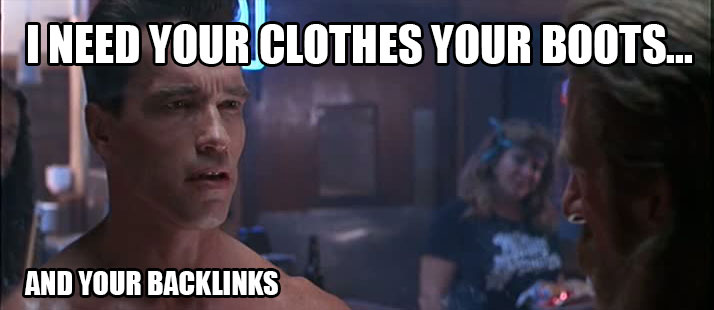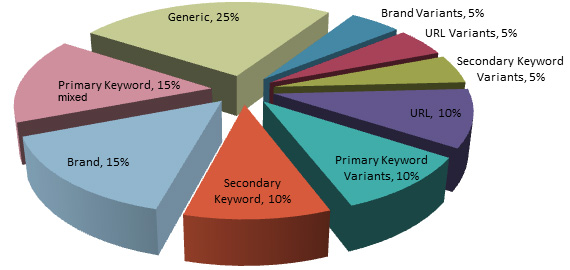I regularly get new clients who come to me with slapped sites and are totally panicking because they don’t know what went wrong.
Many of these clients worked with bad SEO companies low quality link builders who have not bothered to keep up to date with the Penguin updates and what Google wants to see more of moving forward.
While I am not a big fan of Google, and we do not yet know their real intentions for coming up with all these updates – we do need to see what it wants or the sites you are doing SEO for will drop out of the ranks very quickly.
Tip: Make sure to read my Anchor Text Optimization guide that shows you how the SEO pros optimize their backlinks and anchor ratios from their link building activity.
One of the key criteria that started to be discussed in the forums is the over use of the primary and secondary keywords (the money keywords) for which people wanted to rank. According to Google, they believe sites with over-optimized anchor link profile will be penalized for unnatural link signals.
So, for example, if you are selling blue shoes – and if you use the keywords “buy blue shoes”, “cheap blue shoes”, “best blue shoes” … which are your money keywords… say 70% of the time in your link building – then this is a red flag and Google will penalize your site. Google believes now (after 15 years) that this is an unnatural way to build links and if this pattern occurs in someones link profile – then their profile is being artificially built for SEO and the links have not been “earned” naturally by real third party people creating the page for you.
While this does make a lot of sense, it has its drawbacks which we can discuss later. For now, its important to understand that Google wants to see a natural pattern in your anchor link ratio – even if you create this natural pattern artificially and do it yourself, rather than wait for other people to create links to your site – which can take for eternity.
OK, so what exactly does Google consider natural anchor link profile?
The best way to understand what is working, is to go into your niche and study the top 3 to 5 competitors that are ranking on Page 1. If amazon is showing up, or if any other big brand site that sells other stuff also other than a similar prodcut to yours, you cna skip them as that data will be skewed and is not really important for our purposes. Just find the top 3 to 5 sites that are like yours and are ranking on top for you main primary keywords.
Then use a tool like Ahrefs or MajestiSEO to study their anchor link ratio. When you see the data you will understand better how to distribute your anchors while building your links. You should try and emulate these top sites if you see a consistent pattern amongst all of their anchor link profiles. Otherwise just take a sort of average amongst them.
If you don’t have access to these tools -thats fine. We can still follow the standard anchor link distribution pattern as under. This is 100% safe and will ensure your site is not slapped.
10% – main primary money keyword
10% – related secondary & LSI money keywords
20% – brand keywords (need to vary a bit by exact and sometimes with space if brand has 2 keywords), example – Apple, iPhone etc.
All the above “power” anchors should appear in mostly the contextual backlinks that have more authority and link juice. The ones below can also appear in contextual backlinks and other link types like Social Bookmarking, etc.
20% – plain raw URLs / 8 combo rotation *see below for list
20% – generic anchors (like click here, visit our page, visit our online store to buy shoes, etc. Also make sure to use as diverse many as possible, and also use custom generics derived for the niche – like “click here to by blue shoes”. Make highly natural sounding. For tips access competitors backlinks profile in Ahrefs or MajesticSEO. ** see below for full list
10% – niche specific and highly generic keywords (10%) … like “shoes”
10% – random full sentence links from the contextual posts.
Also, include some image links when possible.
Note – While building the links one page could at times get you 2 anchor links. For example one Web2.0 post on Tumblr can have one anchor link with money keyword going to internal page, and one with brand link or raw url link going to homepage.
Also, if you have a solid brand that is somewhat popular – you could increase the ratio for your brand link above.
Tip: You may want to create some natural looking brand or keyword misspellings.. just a few.. as this does look natural.
If you have already built plenty of backlinks that have an unnatural looking anchor distribution profile – then you will need to dilute your link portfolio via editing or deleting your links, or creating fresh links – with the aim of changing your anchor link distribution to the above ratios.
If you are building links in Tiers, then here is the recommended distribution for Tier 2 and above…
The aim of Tier 2 is to power the Tier 1 pages.
20% – main primary money keyword
30% – related secondary & LSI money keywords
20% – brand keywords
10% – plain raw URLs / 8 combo rotation
10% – generic anchors
10% – niche specific highly generic keywords
How does this effect my overall link building strategy?
Its important to understand what Google wants from link builders and how we have to restructure our campaigns to make sure the sites we work on are not penalized.
This is one key element that has changed post-Penguin and you have to understand it clearly if you want to rank sites again.
Actually, you do not have to restructure any of your content writing.
You only need to re-structure your submission process and what to use as the anchor links across your link building campaign.
As an example – if you have a link building module of 10 contextual posts to be created, and you want to target the primary keyword for 70% of the time and target a secondary keyword for 30%, then this is what you need to do…
You will continue to write your 10 articles (as before) with the primary and secondary keyword ratio as above. Nothing changes with that.
In this example – 7 articles will be written with the primary keyword as subject, and 3 with the secondary keyword as subject.
The only thing that changes here is that while actually submitting the article and posting the content online – you need to make sure that you use the new anchor distribution ratios as discussed above!
Thats it!
Just focus on ensuring the actual anchor links are proper and not “money keyword stuffed” or “over-optimized”.
Some of you may be wondering how will Google pass the link juice for the specific keyword if the keyword is not used in the anchor links for over 60% of the article posts?
That is a very valid and relevant point that we need to understand properly as it somewhat is a major shift in the algorithm (or so what Google is telling us).
And, the answer to this question is “Co-Citations”
While many in the SEO have heard this term, few understand exactly what it is and how it works in contributing keyword based link juice for URLs.
If you are one of them – you absolutely must understand how this works… its not rocket science!
Basically, this is a new major algorithmic update in the way Google associates keyword link juice for a particular UR.
What they are saying is that the algorithm will take even a generic anchor link or raw URL link on the page, and associate it automatically with the “money keywords” (primary and secondary keywords) and the “context” of the page content and discussion.
With this major paradigm shift, Google is now claiming that they can understand the main “gist” and the content on the page.
Specifically, they are saying that, the algorithm can dig out the main keywords in the article and automatically associate it with and pass down link juice to the URL in the backlink – and they don’t need you to insert a keyword anchor telling them which keyword to pass the link juice to – for ranking the anchor URL for that keyword.
For now, you need to understand that…
Google looks at your raw URL or a generic link on the off-site page you create – and it will make an attempt to understand the subject of the post and extract the main keywords – and then automatically associate your URL with these keywords.
They seem to be telling us – “stop telling us which keywords to pass link juice down to … and let our algorithm determine that!
However, this is not perfect and has its obvious flaws which I am sure Google is working on to understand better and fix. They are using pattern matching and artificial intelligence, but there is still scope for a lot more improvement. For example – what if there are multiple URLs on the same page? Each with slightly different topic and primary keyword. How does Google handle that? That would be discussion for a separate post!
Do note that the new anchor link distribution update is only ONE factor of a more naturally looking backlink profile. There are plenty more. If you fix only this one element – it will not ensure your site will recover in the rankings. You have to fix all the issues – and there are plenty others.


